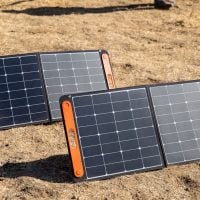Government grant programs play a pivotal role in addressing pressing social issues, particularly in the realm of education. These programs are designed to provide financial assistance to organizations and initiatives that aim to improve educational access and quality, especially in underserved communities. By offering funding, governments can empower non-governmental organizations (NGOs) to implement innovative solutions that tackle educational disparities.
The significance of these grants cannot be overstated; they serve as a lifeline for many NGOs striving to make a difference in the lives of vulnerable populations. In recent years, the focus on education has intensified, particularly in crisis areas where conflict, poverty, and natural disasters disrupt learning opportunities. Government grants are essential in these contexts, as they enable NGOs to develop and execute programs that cater specifically to the needs of girls and marginalized groups.
By understanding the landscape of government grant programs, NGO professionals can better position their organizations to secure funding and ultimately enhance educational outcomes for those who need it most.
Importance of Girls’ Education in Crisis Areas
Empowering Girls, Empowering Communities
Educating girls in these contexts is not only a matter of fairness, but a vital investment in the future of communities and nations. Research has consistently demonstrated that educated girls are more likely to make positive contributions to their families and communities. They tend to have healthier families, participate more actively in the workforce, and advocate for their rights and the rights of others.
Broader Societal Benefits
Moreover, educating girls can lead to broader societal benefits, including reduced poverty rates and improved economic stability. By prioritizing girls’ education in crisis areas, we can foster sustainable development and create a brighter future for all.
A Moral Imperative and Strategic Approach
Prioritizing girls’ education in crisis areas is not only a moral obligation, but also a strategic approach to promoting sustainable development. By investing in girls’ education, we can break the cycle of poverty, inequality, and exploitation, and create a more just and equitable society for all.
The Malala Fund
The Malala Fund is a prominent organization dedicated to advocating for girls’ education worldwide, particularly in regions affected by conflict and crisis. Founded by Nobel laureate Malala Yousafzai and her father Ziauddin Yousafzai, the fund aims to ensure that every girl has the right to 12 years of free, quality education. The organization works with local partners to identify barriers to education and implement tailored solutions that address these challenges.
One of the key strategies employed by the Malala Fund is its focus on grassroots activism. By empowering local communities and organizations, the fund ensures that its initiatives are culturally relevant and sustainable. For instance, in countries like Pakistan and Nigeria, the Malala Fund has supported programs that provide scholarships for girls, train female teachers, and advocate for policy changes that promote gender equality in education.
These efforts not only help girls access education but also foster a sense of agency and empowerment among young women.
UNESCO’s Malala Fund for Girls’ Right to Education in Crisis Areas
UNESCO has recognized the critical need for girls’ education in crisis areas and has partnered with the Malala Fund to amplify their efforts. The UNESCO-Malala Fund initiative focuses on providing educational opportunities for girls affected by conflict, displacement, or natural disasters. This collaboration aims to create safe learning environments where girls can thrive academically and socially.
One notable example of this partnership’s impact is seen in countries like Syria and Yemen, where ongoing conflicts have severely disrupted educational systems. Through targeted interventions such as mobile schools and community-based learning centers, UNESCO and the Malala Fund have been able to reach thousands of girls who would otherwise be denied an education. These initiatives not only provide immediate access to learning but also foster resilience among young women, equipping them with the skills needed to rebuild their lives and communities post-crisis.
USAID’s Let Girls Learn Initiative
USAID’s Let Girls Learn initiative is another significant effort aimed at promoting girls’ education globally, particularly in crisis-affected regions. Launched in 2015, this initiative seeks to address the barriers that prevent girls from completing their education by providing targeted funding and support to NGOs working on the ground. The program emphasizes collaboration with local partners to ensure that interventions are effective and culturally appropriate.
One of the standout features of Let Girls Learn is its focus on innovative solutions tailored to specific contexts. For example, in countries like Afghanistan and South Sudan, USAID has supported programs that offer flexible learning options for girls who may not be able to attend traditional schools due to security concerns or family obligations. By providing alternative pathways to education—such as accelerated learning programs or vocational training—USAID empowers girls to pursue their educational goals while navigating the challenges posed by their environments.
The Global Partnership for Education’s Support for Girls’ Education in Crisis Areas
Collaborative Efforts for Educational Access
GPE collaborates with governments, non-governmental organizations, and other stakeholders to mobilize resources and implement strategies that prioritize educational access for marginalized groups. Their commitment to gender equality is evident in their funding allocations and programmatic focus.
Targeted Initiatives in Humanitarian Crises
In recent years, GPE has launched initiatives specifically targeting countries facing humanitarian crises. For instance, during the COVID-19 pandemic, GPE provided emergency funding to support remote learning solutions for girls in countries like Ethiopia and Mozambique. This funding was crucial in ensuring that educational disruptions did not disproportionately affect girls, who often bear the brunt of such crises.
Fostering Inclusive Educational Systems
By prioritizing girls’ education in its funding strategies, GPE demonstrates a commitment to fostering inclusive educational systems that can withstand shocks and challenges.
The World Bank’s Education for the Most Marginalized
The World Bank has long recognized the importance of education as a driver of economic development and social progress. Its initiative focused on “Education for the Most Marginalized” aims to ensure that vulnerable populations—particularly girls—have access to quality education even in challenging circumstances. The World Bank’s approach combines financial investment with technical assistance to help countries develop robust educational systems.
One notable example of this initiative’s impact can be seen in countries like Bangladesh and Haiti, where the World Bank has supported programs designed to improve school infrastructure and provide scholarships for girls from low-income families. By addressing both supply-side (infrastructure) and demand-side (financial barriers) challenges, the World Bank’s efforts contribute significantly to increasing enrollment rates among girls in crisis-affected areas. This holistic approach not only enhances educational access but also promotes long-term sustainability by building resilient educational systems.
Conclusion and Call to Action
In conclusion, government grant programs play an essential role in supporting initiatives aimed at improving girls’ education in crisis areas. Organizations like the Malala Fund, UNESCO, USAID, GPE, and the World Bank are leading the charge by providing targeted funding and innovative solutions that address the unique challenges faced by girls in these contexts. However, there is still much work to be done.
As NGO professionals, it is crucial to advocate for continued investment in girls’ education and leverage available resources effectively. By collaborating with government agencies, international organizations, and local communities, we can create a more equitable educational landscape where every girl has the opportunity to learn and thrive. Let us unite our efforts and commit ourselves to this vital cause—because when we educate a girl, we empower a generation.









































